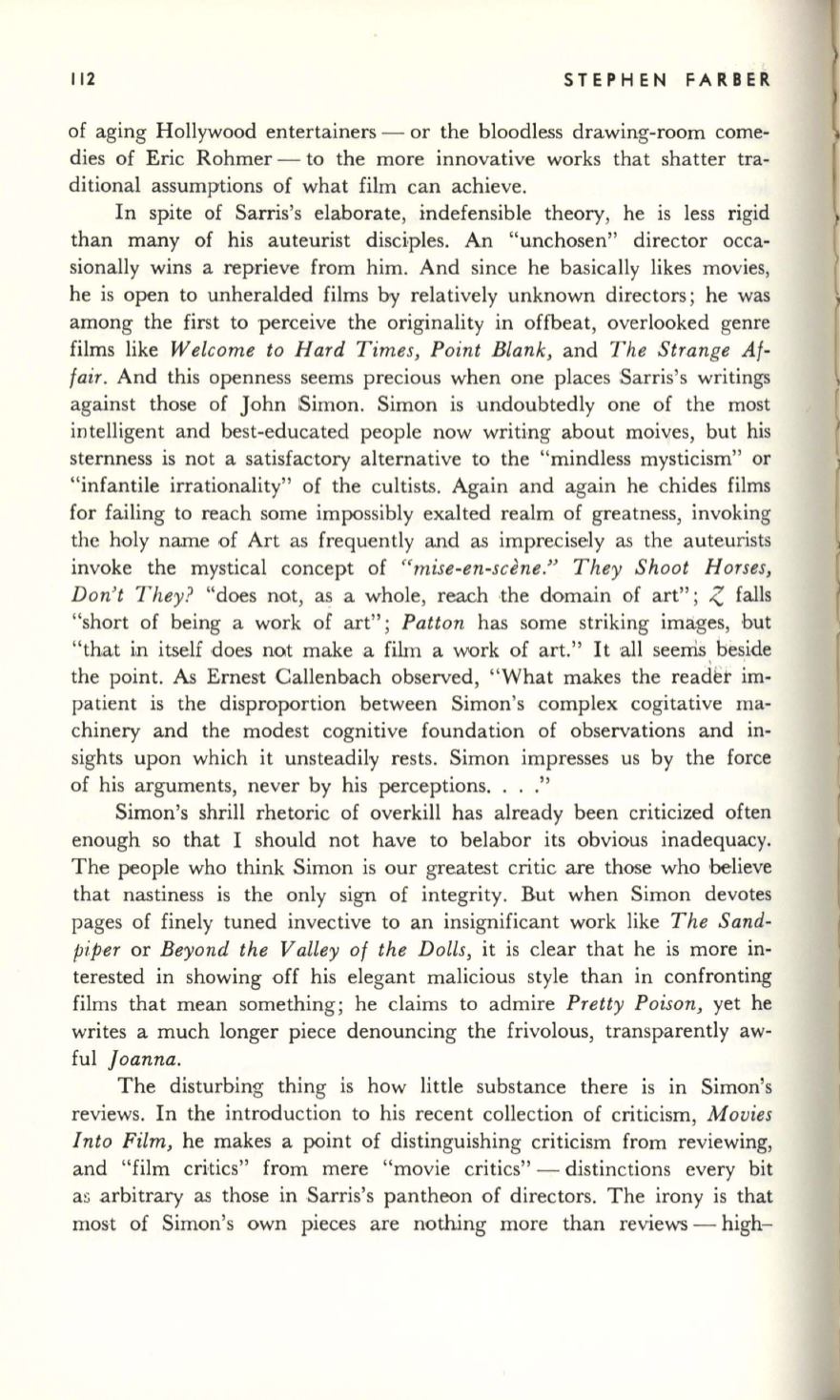
112
STEPHEN FARBER
of aging Hollywood entertainers - or the bloodless drawing-room come–
dies of Eric Rohmer - to the more innovative works that shatter tra–
ditional assumptions of what film can achieve.
In spite of Sarris's elaborate, indefensible theory, he is less rigid
than many of his auteurist disciples. An "unchosen" director occa–
sionally wins a reprieve from him. And since he basically likes movies,
he is open to unheralded films by relatively unknown directors; he was
among the first to perceive the originality in offbeat, overlooked genre
films like
Welcome to Hard Times, Point Blank)
and
The Strange Af–
fair.
And this openness seems precious when one places Sarris's writings
against those of John Simon. Simon is undoubtedly one of the most
intelligent and best-educated people now writing about moives, but his
sternness is not a satisfactory alternative to the "mindless mysticism" or
"infantile irrationality" of the cultists. Again and again he chides films
for failing to reach some impossibly exalted realm of greatness, invoking
the holy name of Art as frequently and as imprecisely as the auteurists
invoke the mystical concept of
"mise-en-scene." They Shoot Horses,
Don)t They?
"does not, as a whole, reach the domain of art";
Z
falls
"short of being a work of art";
Patton
has some striking images, but
"that in itself does not make a film a work of art."
It
all seems beside
the point.
As
Ernest Callenbach observed, "What makes the
reaci~t
im–
patient is the disproportion between Simon's complex cogitative ma–
chinery and the modest cognitive foundation of observations and in–
sights upon which it unsteadily rests. Simon impresses us by the force
of his arguments, never by his perceptions. . .."
Simon's shrill rhetoric of overkill has already been criticized often
enough so that I should not have to belabor its obvious inadequacy.
The people who think Simon is our greatest critic are those who believe
that nastiness is the only sign of integrity. But when Simon devotes
pages of finely tuned invective to an insignificant work like
The Sand–
piper
or
Beyond the V alley of the Dolls,
it is clear that he is more in–
terested in showing off his elegant malicious style than in confronting
films that mean something; he claims to admire
Pretty Poison,
yet he
writes a much longer piece denouncing the frivolous, transparently aw–
ful
Joanna.
The disturbing thing is how little substance there is in Simon's
reviews. In the introduction to his recent collection of criticism,
Movies
Into Film)
he makes a point of distinguishing criticism from reviewing,
and "film critics" from mere "movie critics" - distinctions every bit
as arbitrary as those in Sarris's pantheon of directors. The irony is that
most of Simon's own pieces are nothing more than reviews - high-


